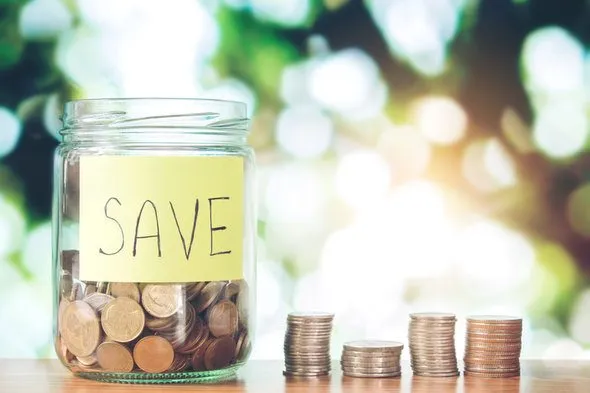When it comes to financial health, it isn’t just about making more and more money. No matter how much money you’re making, you need to be saving a significant chunk of your funds. This comes in handy in case of emergencies or unexpected expenses. It also isn’t enough to stash away wads of cash under your mattress, which leaves your money vulnerable to fire or theft. A savings account allows you to keep your money safe and insured while growing your money according to a financial institution’s set interest rates.
Work with a financial advisor to develop a long-term savings strategy that works for your finances.
What Is a Savings Account?
A savings account is a safe haven for your cash, where it can earn interest under the protection of the Federal Deposit Insurance Corporation (FDIC).
Savings accounts are the most basic type of savings vehicle you can get and are widely available at most financial institutions. Unlike a checking account, a basic savings account doesn’t usually include a debit card or check-writing abilities. This is because you’ll use savings accounts more for short-term and long-term savings goals rather than day-to-day expenses.
How Savings Accounts Work
Offered by most financial institutions like banks and credit unions, savings accounts are easy to open. They rarely require a credit check and often don’t have high monthly fees, if they have any at all. Savings accounts provide a low-risk savings option, but they also usually earn at low yields.
Your account’s interest rate depends on the financial institution. It can also sometimes depend on your account balance, with higher balances earning higher interest rates. A savings account annual percentage yield, or APY, usually falls anywhere between 0.01% and 2%. A certificate of deposit or savings bond may offer a better resource for higher returns, but they don’t provide the same liquidity.
Unlike a checking account, which involves moving your money around almost every day, a savings account limits your usage. Some accounts restrict you to only six outgoing transactions, such as withdrawals and transfers, per statement cycle. You also cannot typically use a savings account to make purchases directly. If you exceed the limit, each extra transaction can land you with a heavy fee.
Most savings accounts allow for automatic and recurring transfers from another bank account, typically a checking account. Some institutions may even require you to open and link a checking account to unlock certain savings account benefits.
Why a Savings Account Is a Good Idea
Using a savings account can help differentiate your savings from everyday spending money. It allows you to store away money you don’t plan to spend in the immediate future. That way, you won’t be as tempted as you would be if the cash was in-hand or in a checking account. Plus, unlike CDs, savings accounts still allow for easy access if you ever need to access the funds.
If growing your money isn’t enough of a reason to open a savings account, you’ll can also benefit through improved financial habits and financial standing with financial institutions.
Setting up automatic transfers helps you get into the flow of regularly saving money. Those extra funds can help you reach higher financial goals, like the higher minimum requirements on better accounts.
When to Use a Savings Account and How to Choose the Right Type

Savings accounts are flexible tools you can use for both short- and long-term goals. Whether you’re setting aside cash for a purchase next month, building an emergency fund or saving for college years down the line, a savings account helps keep your funds safe and accessible. Having money ready for larger expenses can help you avoid debt, especially during emergencies like job loss or medical bills.
To choose the right kind of savings account, first consider your goal. A basic savings account may work well for short-term needs or emergency savings, while a high-yield savings account or money market account might be better for long-term growth. Compare features like interest rates, minimum balance rules and withdrawal limits to find a good fit.
Also, think about where the account is held. Online banks often offer better rates and fewer fees, while brick-and-mortar banks may provide easier access to cash with in-person support. Depending on your preferences, you might choose one or use both to balance convenience and return.
Where Can You Get a Savings Account?
Most financial institutions offer basic savings accounts. However, the specifics of each bank’s accounts will vary, from the interest rates and fees to the perks and requirements.
Ideally, you should look for a savings account that does not charge a monthly maintenance fee since the goal is to strictly save money. You should also shop around for the highest interest rates and the banks that you feel most comfortable with to find the best savings account for you.
These are some of SmartAsset’s favorite savings accounts.
Ally
Ally Bank is an online bank offering a 3.50% APY on all balance tiers with no monthly maintenance fees or minimum deposit. Plus, interest is compounded daily, which means your interest earns interest. Ally makes it easy to deposit, manage and access your funds online via mobile, phone transfer or check request.
There are no physical Ally Bank locations, however, so it’s only a good fit if you’re comfortable with digital banking. It’s also important to note that you cannot make cash deposits to your Ally savings account. You have to deposit a check using Ally eCheck Deposit™, online transfers, direct deposit, wire transfers or sending checks in the mail.
Synchrony
Another top savings account comes from another online bank, Synchrony. Your money earns at a 3.80% APY, and you do not need to pay a monthly fee or meet a minimum deposit. However, unless you live in Bridgewater, New Jersey, you will not have access to a physical branch.
Like Ally, Synchrony does not accept cash deposits. Synchrony has a mobile banking app for mobile check deposits, direct deposit authorization and internal transfers. You can also send a personal or cashier’s check or wire funds from a separate bank. Synchrony also issues ATM cards for account holders.
American Express
The High Yield Savings Account from American Express is great for a simple standalone savings or CD account. The bank lacks a full suite of online banking products and lacks both physical locations and ATM access.
However, your funds will earn at a 3.50% (as of 7/23/2025). Plus, there’s no minimum deposit to open the account or a minimum balance to keep the account. The minimum to earn an APY is $0.
DollarSavings Direct
For those looking for the highest interest rate possible, the High Interest Savings Account from DollarSavingsDirect is the savings account for you. At 3.75% APY, it’s on the higher end of savings account rates. Additionally, there are no monthly fees or minimum deposit requirements.
This impressive rate does not come without trade-offs, however. DollarSavingsDirect is an entirely online bank. In fact, it does not even have a mobile app or ATM access. That means y can only access your savings through external transfers. Additionally, the site is not as intuitive as other options out there, making it better suited toward the more technologically-savvy saver.
How to Sign Up for a Savings Account
Once you’ve chosen your favorite savings account, it’s time to open your account. You can visit the institution, sign up online or call to open your account of choice.
You will need to provide government-issued photo identification (such asa driver’s license or military ID), your Social Security number and a mailing address. You will also need to fund the account with an initial deposit as soon as you’re able. The application process typically takes about 10 minutes to complete, although if you’re applying for an account with an online bank, it will take more time to send copies of your identification.
How to Add Money to a Savings Account
There are a few ways you can add money to your savings account. For one, you can deposit cash by bringing money to a branch during banking hours or by bringing funds to an ATM. You can also deposit checks at either a branch or ATM. Some banks and credit unions even allow you to deposit checks on your smartphone using mobile deposit by taking a picture of both the front and back of the check.
You can also deposit funds with electronic transfers. To transfer from your own checking account with the same bank or institution, just use your app, website or customer service line. To move money across banks and financial institutions, you can complete an electronic transfer.
You can also work with your employer to establish direct deposit so part of your paycheck goes directly into your savings account.
How to Withdraw Money from a Savings Account
When you’re ready to use your money, you’ll need to take the funds out of your savings account. Unlike with a checking account, you can’t just write a check from your checkbook. In some situations, though, you can request that your bank print a cashier’s check for a specified amount from the funds you have in your account. This may be useful for larger costs like a down payment. Just keep in mind that cashier’s checks usually come with a fee of about $10 to $15 each.
If you want physical cash, you can withdraw cash from an ATM or in person from a bank teller. You can also transfer your money to a checking account within your network by using your institution’s app or website. Lastly, you can make an electronic wire transfer to move funds to a different account through services like Western Union, TransferWise or Paypal.
Bottom Line

Savings accounts are an incredibly useful financial tool. Not only do they keep your money safe and insured, but they also allow your money to grow according to a set interest rate. There are a ton of basic savings accounts out there to choose from. You stand to benefit the most by opening a savings account with no fees and a high interest rate. These features, especially paired with recurring deposits into the account, make for a more positive savings experience for both short-term and long-term goals.
Work with a financial advisor who can help you choose the right bank account that aligns with your financial needs and goals.
Tips for Saving More With a Savings Account
- A financial advisor can help you make the most of your financial situation. Finding a financial advisor doesn’t have to be hard. SmartAsset’s free tool matches you with vetted financial advisors who serve your area, and you can have a free introductory call with your advisor matches to decide which one you feel is right for you. If you’re ready to find an advisor who can help you achieve your financial goals, get started now.
- When you have a savings account, you can be content to make one deposit and never touch the account again. However, that can only save you so much. To boost your savings even further, you may want to set up automatic recurring transfers from another account to your savings account. Use a savings calculator to see how this can impact growth of your money over time.
- You’ll also want to be aware of the fees and requirements that can come with a savings account. Some banks do charge a monthly fee to have a savings account. You may be able to waive this fee by meeting a certain account balance. However, if these minimums and fees are not feasible for you to meet, you can easily find another savings account elsewhere.
Photo credit: ©iStock.com/SARINYAPINNGAM, ©iStock.com/baona, ©iStock.com/PhotoInc
